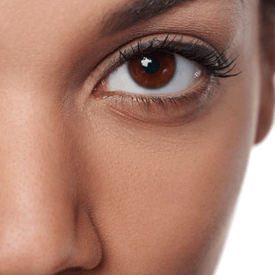

ABOUT DIABETIC RETINOPATHY
Diabetes is a serious disease that not only contributes to problems associated with the circulation to the heart, legs, kidneys, and lungs, but can also be very problematic for the eyes as well. In fact, approximately half of all diabetics will develop an eye condition known as diabetic retinopathy, which is an eye disease that damages the blood vessels of the retina. Board-certified retina specialist Dr. Shalesh Kaushal is a recognized leader in understanding the pathology of this serious retinal disease, which can lead to blindness in many diabetic patients. Regardless of the type of diabetes a patient has (type 1 or 2), this condition can develop especially in patients with fluctuating blood sugar levels as well as those who have had diabetes for a while. Symptoms often worsen over time and has been noted as being one of the leading causes of blindness in both middle-aged and older adults.
DIABETIC RETINOPATHY CAUSES AND SYMPTOMS
Patients who are diagnosed with diabetes should understand that the eyes can be greatly affected. Diabetic retinopathy is a direct result of having diabetes and can occur when blood sugar levels are chronically high. The result of these high levels can cause damage to the blood vessels in the retina. In turn, diabetic retinopathy can lead to serious vision problems relating to diabetic macular edema (DME), which causes fluid to build up in the central portion of the retina, known as the macula. For many diabetics, the symptoms of diabetic retinopathy, especially in the early stages, do not result in obvious symptoms. However, as the disease progresses, common symptoms include blurry vision and vision distortion, a decrease in visual acuity (sharpness), floaters, muted color detection, and in extreme cases, vision loss.
TYPES AND STAGES
There are two types of diabetic retinopathy: nonproliferative and proliferative. Several variations occur in the nonproliferative form:
- Mild nonproliferative retinopathy: This form exists when tiny areas of swelling in the retina’s blood vessels appear.
- Moderate nonproliferative retinopathy: As the disease progresses, blood vessels become swollen and distorted and may not be able to transport blood.
- Severe nonproliferative retinopathy: When the retina is poorly nourished, an increasing number of blocked and damaged blood vessels can result and the growth of new vessels is apparent.
Proliferative retinopathy is a more serious progression of the disease, causing aggressive growth of new blood vessels that are weak and can lead to leaking and bleeding, which can cause vision loss. The proliferative type of diabetic retinopathy is present in about 20% of patients who’ve had diabetes for a decade or longer.
EXAM AND DIAGNOSIS
It is important for diabetics to get routine eye examinations, especially those with higher sugar levels and who have a more advanced form of the disease. A visual acuity test will be performed along with tonometry, so that the pressure within the eye can be measured and checked for abnormalities. During the examination, the pupils will also be dilated so that a clear image of the retina can be assessed. Light waves are used to capture detailed images of the retina using optical coherence tomography (OCT). Depending on the severity of the symptoms, fluorescein angiography will be injected with a special dye into the bloodstream, which highlights the blood vessels in the retina so that Dr. Kaushal can determine if there is any bleeding, leakage, or damage.
DIABETIC RETINOPATHY TREATMENT AND PROGNOSIS
During the treatment discussion with Dr. Kaushal, health maintenance and nutrition will be discussed. A healthy diet that includes plenty of nutrition-rich resources, avoiding smoking, and incorporating a daily regimen of exercise can all help to improve the overall circulation within the body, which includes the eyes. There are a number of treatments that Dr. Kaushal may prescribe or perform, such as corticosteroids to help alleviate symptoms like inflammation. These medications may be implanted into the eye, or they can be injected to provide a source of continuous delivery. Anti-VEGF drugs with vitreous gel can help block certain proteins that are responsible for the growth of abnormal blood vessels that can leak fluid. For patients who require a more aggressive treatment approach, Dr. Kaushal will discuss additional options such as laser therapy.
While diabetic retinopathy can lead to serious vision loss, early detection is key and most patients can expect about a 95% reduction in the occurrence of blindness with early diagnosis and proper treatment. Diabetics who follow a clean, strict diet and keep their blood sugar levels stable can significantly reduce the progression of the disease and help reduce symptoms.
DIABETIC RETINOPATHY HELP
Diabetic retinopathy is one of the most common eye diseases among diabetics. Dr. Kaushal treats countless patients, counseling them to better health and improved vision using his unique diagnostic approaches and advanced technology. We treat our diabetic patients with comprehensive eye exams so we can monitor and help improve the symptoms associated with this disease. We invite you to call our Ocala, FL office and schedule your consultation to learn more about how Comprehensive Retina Consultants can help you.


